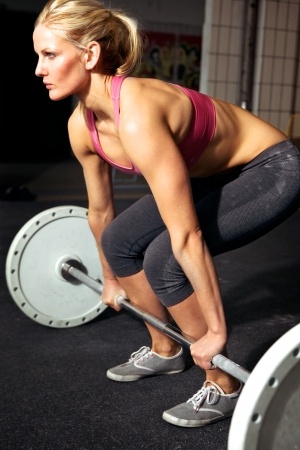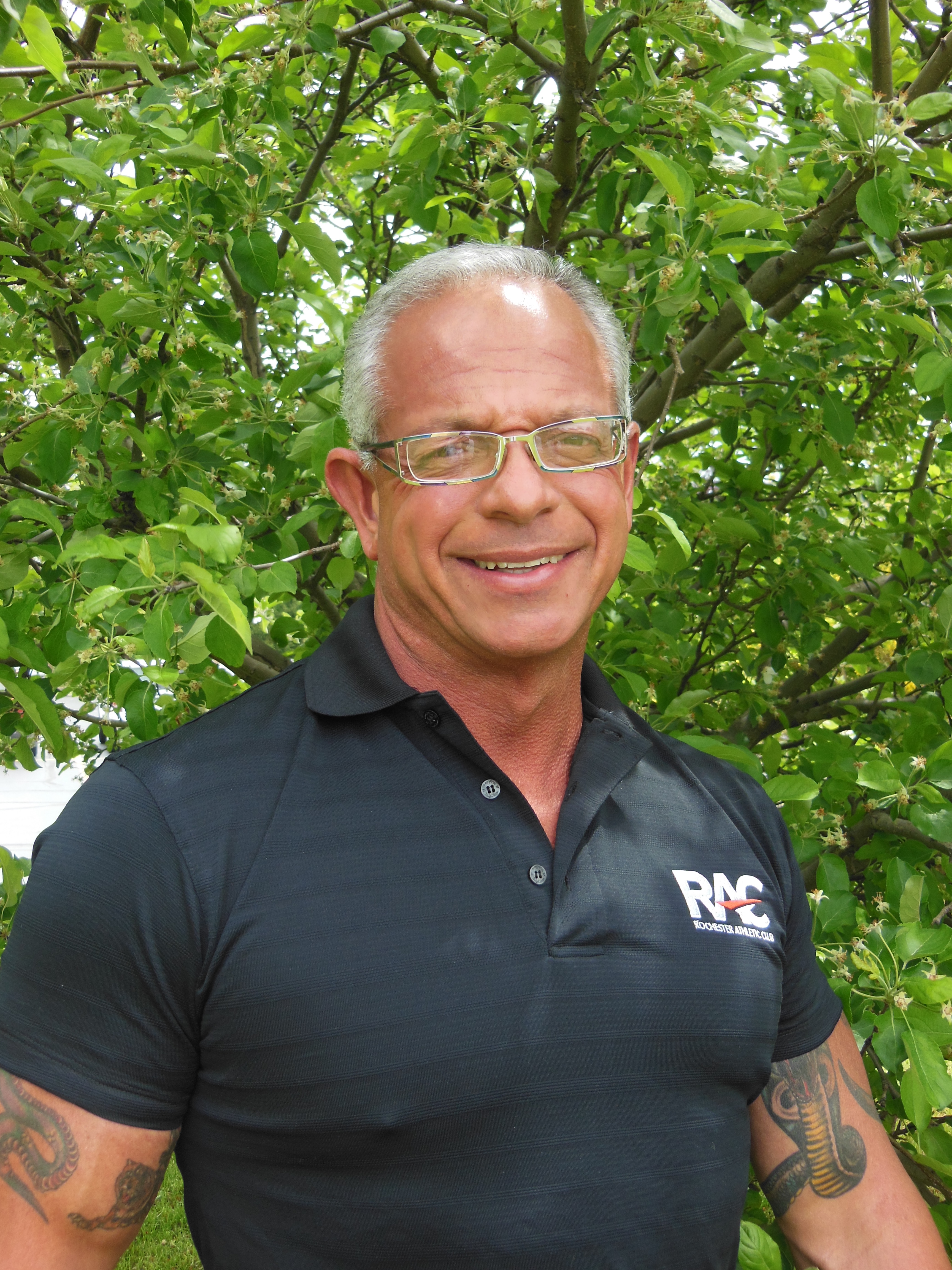Emphasis
The primary muscles stressed in this movement are the muscles in the hips, upper leg (quadriceps and hamstrings), middle and lower back and the muscles in your neck. Secondary muscles used are the entire upper body.
Starting Position
Standing with your shins just touching a weighted squat bar, place your feet shoulder width apart and directly under the bar. Squat down naturally and grip the bar just outside the width of your legs with one palm facing forward and the other palm facing back (interlocking grip). It is very important to keep your back straight to slightly arched and your abdominals contracted throughout the entire movement.
Movement
Lift the bar up off the floor until it is against your upper thighs, arms extended. As you bring the weight up, keep the bar as close as possible to your legs. Take two to three seconds to lower the bar back down to the floor.
Training Tips
- Keep your back straight throughout the entire exercise. Focusing on keeping your shoulders back will help achieve this.
- Using the interlocking grip increases your grip power. If more than one set is going to be performed, reverse your grip on each set.
- Also focus on pushing your feet through the floor as you lift the bar up.
Warning Tips
- You must keep your back straight or slightly arched throughout the entire movement. Failure to do so can result in serious injury to your back.
- Do not lower the weight any faster than two to three seconds. You must be in control at all times. The faster you perform this movement, the less control you will have which in turn will increase your risk of injury.
- Do not allow your keens to become fully extended before you bring your back into an upright position. This will place a tremendous amount of stress on your lower back which could cause it to become injured.
- You must keep the bar as close to or against your legs as you raise the bar up. Failure to do so can result in serious injury to your back.
 Robert Bovee Certified Master PPT, RTS, ETS, FTS
Robert Bovee Certified Master PPT, RTS, ETS, FTS
As one of the most successful Professional Personal Trainers and Exercise/Fitness Therapists in the United States, Robert continues to remain at the forefront of the industry by providing his clients with a thorough education and the tools to implement that education. By improving his client’s physical health, strength, endurance, cardiovascular fitness and nutritional habits, he is able to motivate them to lead longer, happier and more productive lives. Find out more about Robert and his personal training career and services, here.






